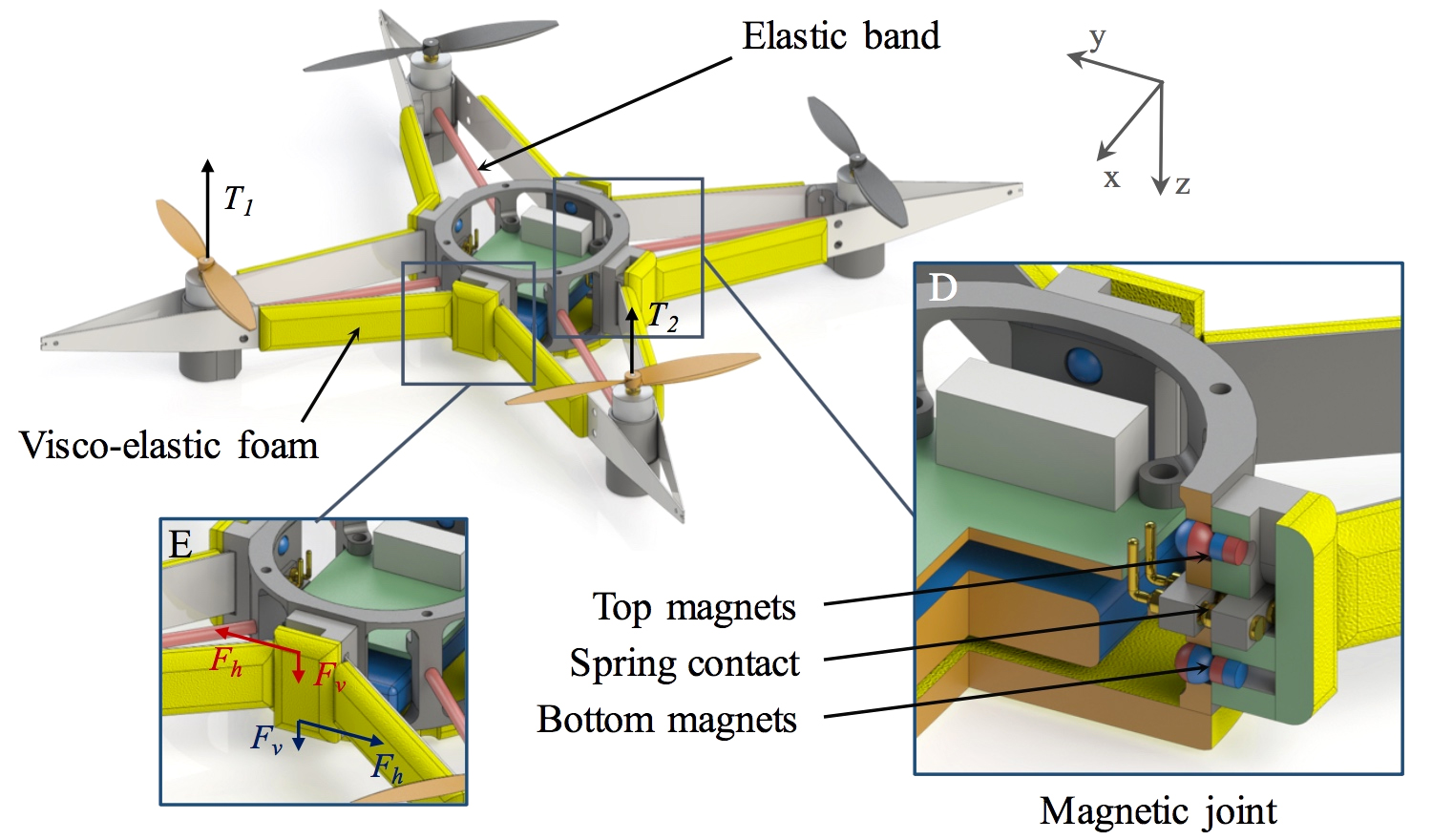Like death and taxes, drone crashes are basically inevitable. Even experienced pilots aren’t immune to hardware failures or software problems. But instead of building drones stronger, or wrapping them in awkward safety cages, Swiss researchers have designed a flexible quadcopter that squishes when it crashes, minimising the damage it takes.
It’s another design innovation that Mother Nature already came up with aeons ago. Flying insects crash into things all the time, but their bodies are designed to be flexible and absorb most of the impact, without causing any permanent damage. Most drones, however, are made from lightweight plastic or carbon fibre that helps them fly, but is easily broken after a rough landing, leaving them grounded.
Researchers at Switzerland’s École Polytechnique Fédérale de Lausanne — or EPFL, for short — have long been stealing ideas from nature and built an insect-inspired quadcopter that crumples up during a crash only to pop back to its original form once it’s come to rest.
It turns out that wasps have a unique flexible joint in their wings that allows them to remain rigid during flight, but also crumple in the opposite direction in the event of a collision. This design ensures that if a wasp’s wing hits something while it’s flapping away, it won’t catastrophically tear the thin membrane, leaving the insect unable to fly.

But quadcopters don’t have wings, and their propellers are cheap and easy to swap out when broken. It’s the rest of the craft that usually sustains the expensive damage. So the EPFL researchers designed a new type of drone fuselage with a flexible elastic frame that attaches to a central rigid core using a series of magnets. When the drone crashes into something, the force of the impact causes its central core to separate from the outer frame, which then squishes and compresses to absorb the energy of the impact.
Once it’s done flopping around, everything pops back into place thanks to the magnets and (assuming it lands right side up) the drone is immediately ready to take to the skies again. But the design isn’t just applicable to drones. Other robots are just as prone to crashing and falling, often resulting in expensive repairs. So by engineering them with a strategic mix of rigid and flexible components, they could also better survive inevitable accidents.
When you think about it, your own body, a skeleton covered in flexible tissue, is essentially the same thing.
[École Polytechnique Fédérale de Lausanne via IEEE Spectrum]
